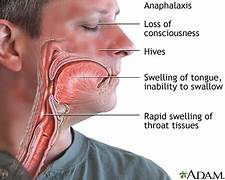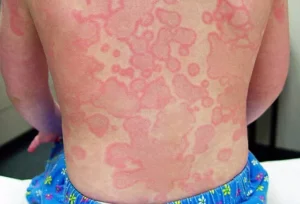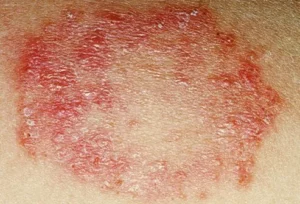What are allergic responses
The Allergic responses
This post is about your body’s reaction to normally harmless substances. Allergy responses range from mild to life-threatening. Allergies are your body’s reaction to a foreign proteins and chemicals . Usually, these proteins (allergens) and chemicals are harmless to many people. However, if you have an allergy to a particular protein or chemical, your body’s defense system immune system overreacts to its presence in your body.
What are these Allergic responses
An allergic reaction is the way your body responds to an allergen in response to exposure. If you have allergies, the first time you encounter a specific allergen, your body responds by creating immunoglobulin E (IgE). Your immune system makes antibodies to form IgE. Thus, IgE antibodies bind to mast cells (allergy cells) that live in your skin, respiratory tract (airways) and the mucus membrane in the hollow organs that connect to each other from your mouth to your anus (gastrointestinal or GI tract).
The antibodies find the allergens in your body and help remove them by taking them to the mast cell (allergy cell), where they attach to a special receptor. This causes the allergy cell to release histamine. Histamine is what causes your allergy symptoms.
Allergic responsive causes
Genetic and environmental factors work together to contribute to the development of allergies. Genetic factors are involved because specific traits are found common among families. Environmental factors also increase the risk of developing allergies. These factors include the following:
- Repeated exposure to foreign substances (allergens)
- Our Diet
- Pollutants (such as tobacco smoke and diesel exhaust fumes)
- Drugs
- Metals (Nickel)
The four types of allergic reactions
Two British immunologists, Coombs and Gell, have classified allergic reactions into four types, Type I, II, III and IV. The immediate types of allergic reactions are Type I, II and III, because they occur within minutes to twenty-four hours after exposure to the allergen. Type IV reactions typically occur after 24 hours of exposure. Thus these reactions are called delayed allergic reactions.
Type I reactions defined as anaphylactic reactions:
About Type I immune system reactions, the proteins called IgE antibodies in the immune system cause these reactions. These are produced in response to the allergens such as pollen, animal dander or dust mites, or even certain foods. Thus the allergen causes the release of histamine and other chemicals causing inflammation and swelling.
Examples of type I allergic reactions include
- bronchial asthma,
- allergic rhinitis,
- allergic dermatitis,
- food allergies,
- allergic conjunctivitis (eye inflammation) and
- anaphylaxis (allergic shock).
- Insect stings
- Hives
- Drug reactions
Anaphylaxis is the most severe form and is a medical emergency. The reason, it can lead to a sudden, life-threatening respiratory failure. People with anaphylaxis have extreme difficulty in breathing, swelling, low blood pressure, bluish skin and shock.

Anaphylaxis Shock symptoms chart
Type II or cytotoxic reactions
This type of allergic reaction by our immune system proteins called IgG and IgM. The antibodies involved in type II reactions damage cells by activating a component of immunity called the complement system. Type II allergic reactions can be seen in certain conditions like
- autoimmune hemolytic anemia,
- immune thrombocytopenia and
- autoimmune neutropenia.
Type III or immunocomplex reactions
About the Type III immune system reactions, They are also caused by the immune system proteins IgM and IgG antibodies. These antibodies react with the allergen to form immunocomplexes (antigen-antibody complexes). These immune system complexes are responsible for the reaction. Type III allergic reactions examples:

Serum sickness is a delayed hypersensitivity reaction that is similar to an allergy. It happens when your body reacts to certain medications or antiserums. Typical reactions include a rash, fever, and joint pain.
Type IV or cell-mediated reactions
lastly, the definition of Type IV allergic reactions. These responses the delayed type of hypersensitivity or allergic reactions. Thus they occur after 24+ hours of exposure to the allergen. These reactions typically take 48-72 hours or longer to appear after contact with the allergen. Many long-term infectious diseases, such as tuberculosis and fungal infections, show cell-mediated reactions. Certain skin sensitivity reactions esp. to metals may also belong to this type.

Ring worm fungus infection reaction
Lastly, Treatments for allergic reactions include antihistamines, decongestants, nasal steroids, asthma medicines and immunotherapy. More on this in later posts.